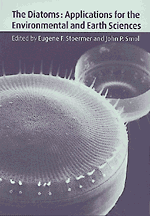Book contents
- Frontmatter
- Contents
- Contributors
- Preface
- Part I Introduction
- Part II Diatoms as indicators of environmental change in flowing waters and lakes
- Part III Diatoms as indicators in extreme environments
- Part IV Diatoms as indicators in marine and estuarine environments
- Part V Other applications
- 18 Diatoms and archeology
- 19 Diatoms in oil and gas exploration
- 20 Forensic science and diatoms
- 21 Toxic and harmful marine diatoms
- 22 Diatoms as markers of atmospheric transport
- 23 Diatomite
- Part VI Conclusions
- Glossary, and acronyms
- Index
18 - Diatoms and archeology
Published online by Cambridge University Press: 16 January 2010
- Frontmatter
- Contents
- Contributors
- Preface
- Part I Introduction
- Part II Diatoms as indicators of environmental change in flowing waters and lakes
- Part III Diatoms as indicators in extreme environments
- Part IV Diatoms as indicators in marine and estuarine environments
- Part V Other applications
- 18 Diatoms and archeology
- 19 Diatoms in oil and gas exploration
- 20 Forensic science and diatoms
- 21 Toxic and harmful marine diatoms
- 22 Diatoms as markers of atmospheric transport
- 23 Diatomite
- Part VI Conclusions
- Glossary, and acronyms
- Index
Summary
Introduction
One of the goals of modern archeology is to understand how past communities interacted spatially, economically, and socially with their biophysical environment (Butzer, 1982). To this end, archeologists have developed strong links with zoologists, botanists and geologists to provide information on the environment of past societies and to help understand the complex relationships between culture and environment. This chapter reviews the role of diatom analysis in such studies, and discusses how the technique can be applied at a range of spatial and temporal scales to place archeological material in its broader site, landscape and cultural context. In particular, we examine applications to the provenancing of individual archeological artefacts, the analysis of archeological sediments and processes of site formation, the reconstruction of local site environments, and the identification of regional environmental processes affecting site location and the function of site networks. We have chosen a small number of examples that best illustrate these applications; other case studies directly motivated by archeological problems may be found in recent reviews by Battarbee (1988), Mannion (1987) and Miller and Florin (1989), while diatom-based studies of past changes in sea level, climate, land-use, and water quality that are also relevant to archeological investigation are reviewed elsewhere in this volume (e.g., Bradbury; Cooper; Denys & de Wolf; Fritz et al.; Hall & Smol).
Analysis of archeological artefacts
The direct application of diatom analysis to archeological artefacts is best represented in the field of pottery sourcing and typology.
- Type
- Chapter
- Information
- The DiatomsApplications for the Environmental and Earth Sciences, pp. 389 - 401Publisher: Cambridge University PressPrint publication year: 1999
- 7
- Cited by



